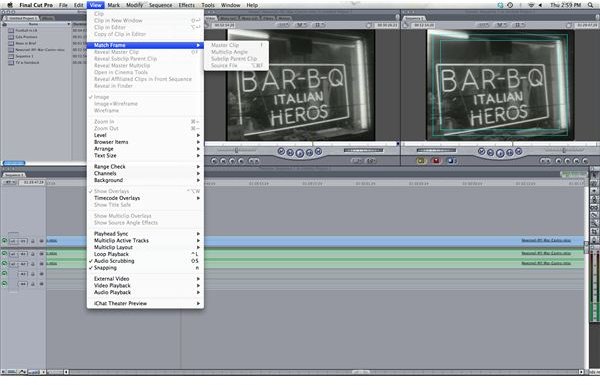Using Match Frame Features in Final Cut Pro
Match Point
Final Cut Pro is a non-linear editing system that is used for a whole range of projects. Through video editing is relatively similar in terms of process no matter what type of project you are working with, many different types of projects have different needs of the editor. It is the job of the video editing software itself to facilitate the creative work of the editor in a way that allows them to remained focused on the job of editing and not the interface of the software. This is best done in Final Cut Pro by allowing for certain tools that are optimum for different uses. Match Frame is a tool available in Final Cut Pro that allows you to match the specific frame that is in the Canvas with the same one on a different station of clip, or the other way around. This is a perfect tool when using coverage in different narrative scenes and can become very useful for complex fiction films. Here is an easy Final Cut tutorial on how to employ Match Frame.
Using Match Frame
Start by putting the playhead on the point in the Timeline where you want to create the Match Frame in your Final Cut Pro. You can also go to the clip you have opened in the Viewer and set the playhead where you want to match it in the Canvas. Really any of these combinations can work with Match Frame depending on which window you have selected.
From here go to the upper task bar, select View, and then choose Match Frame, which is at the top of the second block of options right above Reveal Master Clip. You can just select Match Frame for the basic options of matching the frames up between the Canvas and the Viewer, or you can set your mouse on it and reveal other options. You can match to a Master Clip if you want, which is good for finding the location of a specific set of takes on a larger clip that is in your Browser. You can also Match Frame back to the actual Source File, which can act as a more in depth version of matching to a Master Clip. Here you are also saved the option to use the Subclip Parent Clip, which is good if you were using larger clips and then cutting them into smaller subclips for use in organized video editing. With this you can find the point that you have selected with Match Frame in your subclip in the parent clip that it came from. There is also a Multiclip option for using Match Frame, which is useful, but only if you actually have gone through the process of using Multiclip.
This post is part of the series: Final Cut Pro Interface Tutorials
Here is a series of tutorials on how to work with different features in the Final Cut Pro interface.
